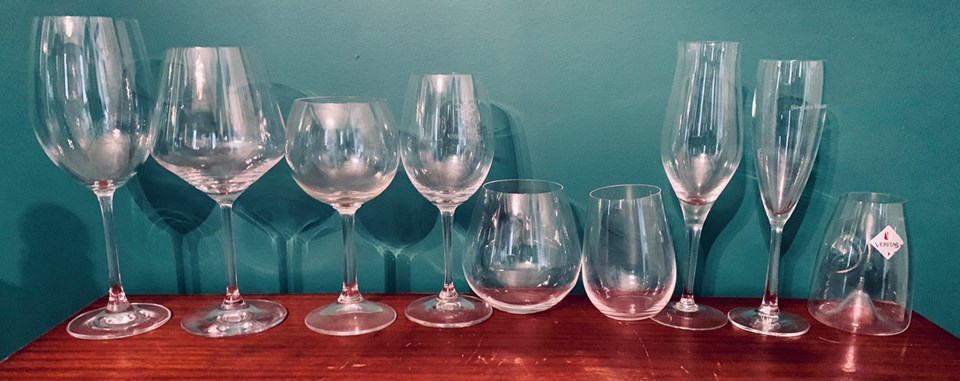Learning about wine can seem intimidating. When you enter a wine store and you are choosing a wine from hundreds of different wines, it can be overwhelming. Once you finally pick ‘the wine’, then you need to choose the right wine glass. And while there aren’t hundreds of shapes of wine glasses, there’s certainly dozens of shapes to decide on.
Some manufacturers such as the Austrian firm, Riedel actually have different glasses for every variety of wine. Chardonnay has its own glass shape while another white, Riesling is different. Cabernet Sauvignon has its own unique shape that differs from another red like Pinot Noir. That sounds like it’s going to make buying the right glass easy. But when the glasses go from $30 a glass to $135 a glass, this can get expensive, especially if you enjoy tasting different wines.
For every sommelier who claims the Riedel varietal style makes wine taste better, there are critics that claim it’s just a great marketing gimmick. You can be the judge!
Most wine glasses have three parts, the base, the stem, and the bowl. The base’s purpose is obvious. It usually keeps the glass from tipping over.
The stem allows you to hold the glass without touching the bowl. This allows you to view the wine’s colour, which can be quite beautiful and give you clues as to the grape’s characteristics and the wine’s age. The stem also prevents a white wine from warming up which would happen if you were always grabbing the bowl.
Finally, the bowl is where the wine is. A good wine glass should have a wider bowl than its rim so can swirl without splashing all over yourself or others nearby. Swirling will release aroma compounds to the centre of the glass so when you put your nose into the bowl, the smells are more focused and you can detect the subtleties that are often present in a fine wine.
While I am on the topic of swirling, its important that you fill a wine glass only one-third full so that the chance of splashing yourself and others is minimized. Crying over spilt milk is a minor problem whereas crying over spilt wine is more serious!
The edge of the bowl or the rim is where the rubber meets the road; in other words, the rim is where the wine touches your mouth. Wine crystal will have a thinner rim than glass. This is an advantage because the wine taster will pay less attention to the feel of the glass and more attention to the flavour and the feel of the wine.
For white wines, the ideal glass is narrower than a red glass. Red glasses have a larger bowl.
There are stemless glasses available and they are perfect for cleaning in the dishwasher. While they are also good for reds, the white stemless glasses have a disadvantage. Your hand will warm them up quickly unless you frequently put the glass down.
For sparkling wines, do NOT use the traditional saucer shaped glass you see at weddings. Shaped after Marie Antoinette’s breast, Champagne or other sparkling wine will lose their bubbles faster. It’s better to use a tall thin tulip shape or a flute shape glass. They will retain the bubbles longer as the wine has a smaller surface area so the bubbles escape slowly. And you can watch the bubbles rise to the top longer. I find that if I am drinking Champagne, I will use good white or red wine glass with a larger bowl. Champagne has more complex flavours than cheaper bubblies and a larger bowl will release those flavours.
Eric Hanson is a lifelong Richmond resident, retired teacher, and wine journalist.



